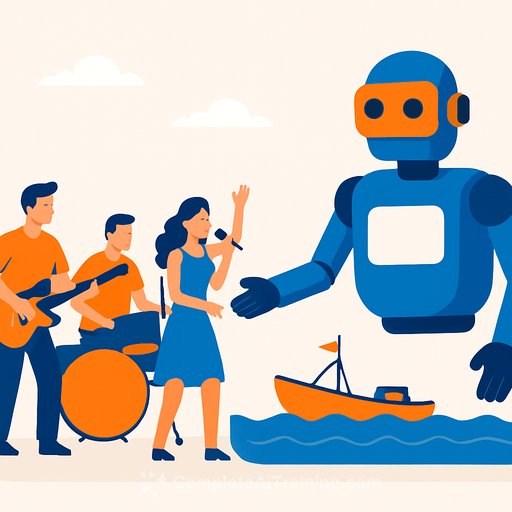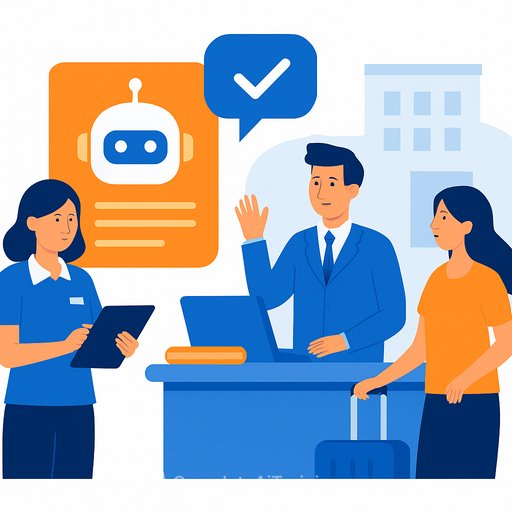The iceberg is here: an HR brief for the AI era
It's April 1912 on the Titanic. Champagne flows in the Grand Dining Room while water seeps into the lower decks. The band keeps playing, but the ship is compromised.
That's where the labor market sits today. AI is the iceberg. The music is still playing, but early signs say the hull is breached.
What's changed (and why HR should care)
AI is already producing work that looks human. Companies are slowing hiring to adopt it. Entry-level applicants per job are up ~30%, while listings for those roles are reportedly down ~35% since 2023.
Recent grads are taking the hit first. Federal Reserve sources put unemployment for recent college graduates around 5.3%, higher than the broader workforce, and worsening faster than non-college peers. See the New York Fed's tracker for context here.
Individual employers are pulling back. PwC announced a ~33% drop in entry-level hires, Fiverr cut ~30% of its workforce to become "AI-first," and the 15 largest tech firms have reduced new-grad hiring by ~50% since 2019.
What AI leaders say out loud
Anthropic CEO Dario Amodei has warned that half of entry-level white-collar roles could be automated, risking double-digit unemployment. Elon Musk goes further, saying all jobs may be replaced in time. You don't have to agree to respect the signal: early-career work is exposed.
Lifeboats for HR: decisive moves you can make now
Your job isn't to predict everything AI will do. Your job is to reduce risk, preserve capability, and build a workforce that benefits from AI rather than gets displaced by it. Start here.
1) Run an automation-risk audit at the task level
- Inventory tasks, not roles. Flag repetitive, document-heavy, or data-aggregation work (spreadsheets, slides, briefs) that junior staff do today.
- Classify each task as automate, augment, or human-only. Redesign roles so early-career employees spend more time on judgment, client-facing work, and cross-functional problem solving.
2) Protect and rewire the early-career pipeline
- Shift from degree-first to skills-first screening with work samples, job trials, and paid apprenticeships.
- Replace generic internships with rotational sprints that ship real outcomes using AI tools under guidance.
- Create "AI-augmented analyst" roles where juniors own outputs that AI can't: synthesis, exception handling, and stakeholder alignment.
3) Build AI fluency for every function
- Stand up a baseline AI curriculum for managers and ICs (prompting, QA, privacy, and toolchains for daily workflows).
- Pair training with on-the-job playbooks: recruiting, HR ops, finance, legal, and marketing should each have approved use cases and examples.
- If you need a fast start, consider curated programs by job family like these.
4) Establish policy, safety, and procurement guardrails
- Set rules for data handling, model access, prompt hygiene, and human review. Ban feeding confidential info into public tools.
- Evaluate vendors for bias, auditability, and SOC/ISO controls. Require human-in-the-loop on decisions that affect pay, promotion, or hiring.
- Retire AI "detectors" as compliance tools; they produce false positives. Focus on process, documentation, and outcome review instead.
5) Update job architecture and compensation
- Rewrite job levels to reflect AI-augmented output. Reward leverage: the ability to ship more value with the same hours.
- Introduce "AI efficiency" and "AI quality" competencies. Tie them to promotion criteria and learning plans.
6) Rethink hiring and assessment
- Use structured, timed work samples where AI use is allowed and disclosed. Score for problem framing, verification, and communication.
- Replace generic interviews with case debriefs where candidates show their workflow (prompts, iterations, QA steps).
7) Build an internal AI council
- HR, Legal, IT, Security, and key business leaders meet monthly to review pilots, risks, and ROI.
- Publish an "approved use case" catalog and retire what doesn't pay off.
8) Fund reskilling before severance
- Where tasks go to AI, move people to higher-value work with short, applied upskilling sprints.
- Budget for certifications and microlearning tied to measurable outputs. If you need options, browse current programs here.
9) Set clear metrics
- Baseline time-to-complete, error rates, and customer satisfaction now; re-measure post-AI.
- Track 3 numbers: percentage of tasks automated or augmented, quality deltas, and redeployment rate of affected staff.
10) Communicate with candor
- Tell employees and candidates what's changing and why. Share the plan for new skills, new roles, and fair transitions.
- Make managers accountable for coaching people through the shift, not just "using tools."
What to watch
Short-term displacement is likely. We may also see reversal in some areas as rushed AI deployments underperform and teams re-hire. Don't bet your workforce strategy on either extreme.
The signal is clear: entry-level, document-heavy work is unstable. Your edge is a workforce that uses AI for leverage while doubling down on judgment, ethics, and relationships.
The music is quieter. Move now.
It will feel odd to stop dancing while the room is still lively. Do it anyway. Audit tasks, redesign roles, upskill fast, and set real guardrails.
The ship isn't doomed if you act early. Build the lifeboats while the lights are still on.
Your membership also unlocks:






